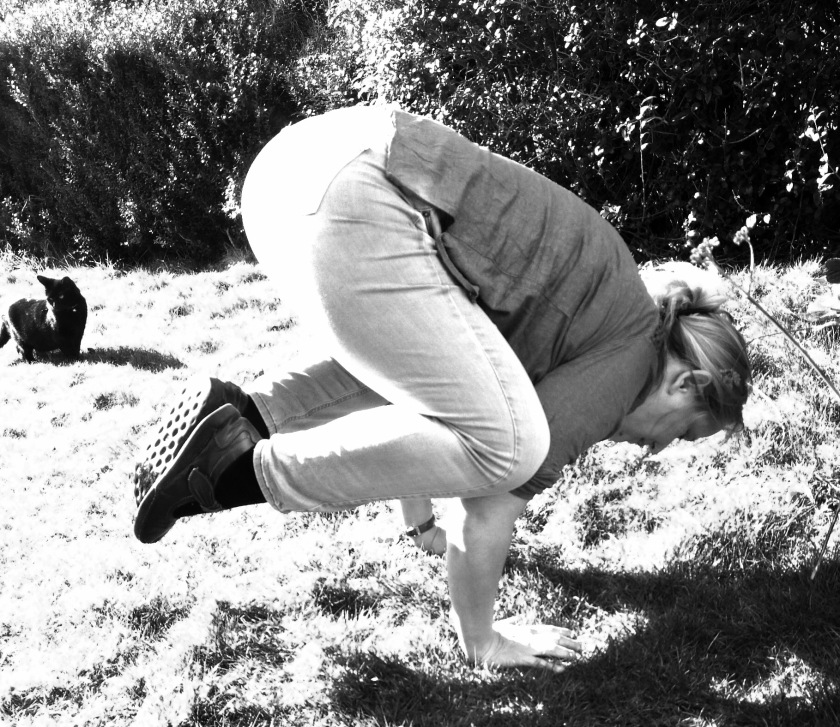 My regular readers will know that I have recently started a Yoga Teacher Training course with Universal Yoga. The course is beautiful and I feel very privileged to have this opportunity. It is also challenging on many levels – emotional, intellectual and physical. By the end of the second weekend, my head was spinning from philosophy, teaching techniques and anatomy and physiology, and I had done more asana (physical poses), pranayama (breathing exercises), meditation, mindful walking and chanting in a weekend than I believed could possibly be fitted in!
My regular readers will know that I have recently started a Yoga Teacher Training course with Universal Yoga. The course is beautiful and I feel very privileged to have this opportunity. It is also challenging on many levels – emotional, intellectual and physical. By the end of the second weekend, my head was spinning from philosophy, teaching techniques and anatomy and physiology, and I had done more asana (physical poses), pranayama (breathing exercises), meditation, mindful walking and chanting in a weekend than I believed could possibly be fitted in!
Our starting point was the seemingly simple question, what is yoga? We examined dictionary definitions, definitions passed down the ages from the early yoga texts, and more modern descriptions from eminent yoga teachers, before moving onto our own personal definitions. We all agreed that yoga is more than a set of exercises to do on your yoga mat each week, but what more it is seems personal. Some of the group are very drawn to chanting and devotional yoga, while others are more drawn to secular mindfulness or strong physical practice.
For me, yoga is a set of tools that I can use to energise myself, maintain equanimity in difficult circumstances, stay healthy and find more joy in everyday life. When I practice yoga every day, I feel different: lighter, looser, happier, less irritable, more focused and more compassionate. It is hard to put my finger on exactly what is different, but other people notice it – my professional discussions go better, my family are more relaxed, I have more random conversations with strangers, and I pass less stress onto my team at work.
Many people are drawn to yoga for the physical benefits. Through practising yoga, I have certainly become both more flexible and stronger. It helps me cultivate stamina, since a vigorous set of sun salutations is definitely cardio-vascular. Practising yoga with careful attention makes the poses safe; by learning how to come to my edge, and release with the breath, rather than forcing myself into a pose, I can practice without getting injured. After a yoga practice or class, I may leave feeling energised and joyful, or calm and restored.
When I first practiced yoga, I thought of it as a mainly physical practice and I enjoyed challenging myself to achieve more difficult asanas. I had enjoyed gymnastics as a child, even though I was never very good at it, and yoga just seemed like grown up gymnastics. I got a kick out of being able to stand on my head, get my forehead to my shins and twist myself into the lotus. Other benefits of yoga quickly started to creep up on me though.
As a university student, I experienced a lot of anxiety, and my Mum gave me her Sivananda yoga book. I started a daily practice and this helped me to control my anxiety by focusing on the present moment rather than my large, existential concerns. Each pose is a moment of stillness and focus, of noticing what is happening in the body and remembering to breath slowly in each different shape. Yoga means “to yoke” or “union” in Sanskrit, and one way to think of this is the bringing together of attention on breath, mind and body at a particularly moment in time. I wasn’t aware of the concept of mindfulness at the time, but without anyone ever explaining it to me, the yoga asanas (postures) helped me to be more mindful in the present moment.
Through my twenties and thirties, I had periods of practising and periods of not, but in most of the more challenging periods of my life – relationship breakups, health issues, bereavement, job insecurity, starting a family – I have been drawn back to yoga. My mat is my sanctuary, a place where I know I can find respite from whatever problems I have. My pregnancy yoga teacher was particularly keen on teaching us how to breath through physical discomfort, and this is a skill to return to over and over in life. When I come into the present moment on my mat and focus on my breath, I come back to my true self and find my inner strength. Yoga reminds me that I am still alive, still breathing and quite safe in the present moment.
In fact, the present moment is not much short of a miracle – the collection of atoms and molecules that make up me will only be together for a very short time in the life of the universe, and here I am, experiencing my own version of consciousness right here today. One day my atoms will no longer make up me anymore, but will mix up again with the rest of the universe = the period of time that they are configured as me is short indeed.
Yoga asanas are intended to release built-up prana (life force) and to help energy to flow smoothly through the body. This can be experienced immediately after any asana, when a few moments inward exploration will reveal energy changes – there may be a calm release of tension or an uplifting, even euphoric lift of energy. By choosing a balanced sequence of asanas, the overall practice leads to a balanced energy. When I practice yoga in the morning, I feel energised and focused throughout my day. If I don’t practice for a few days, I feel sluggish, slow and heavy.
Patanjali’s opening sutras can be translated as:
Now, the teachings of yoga.
Yoga is to still the patterning of consciousness.
Then pure awareness can abide in its very nature. (translated by Chip Hartranft)
Yoga is a way of bringing stillness to the mind, so that we can let go of all the conditioning we have experienced, the assumptions we make, the thought patterns we have developed and our habitual ways of telling stories about the world, ourselves and our relationships. In letting go of all that, we can experience stillness and a sense of unity with the rest of the universe.
Patanjali describes this as the uniting of individual consciousness with the universal consciousness – recognising that they are the same. Achieving this sounds like a lofty and esoteric ambition, and would probably put off many beginning yoga students who just want to feel healthier and calmer. A little research into modern neuroscience also calls into question his dualist perspective. Nevertheless, as we progress in yoga, we may more inclined to wonder what this self or consciousness that we experience really is and to experience it in more subtle ways through meditation.
We are constantly narrating stories about ourselves and world around us to ourselves. Nowhere is this truer than on the yoga mat, where I may be thinking, “I can’t do this, my arms are too short”, “We’ve been in this pose for ages, has the teacher forgotten us?” “Look at me in this amazing, clever pose”, or “This meditation is so boring, when will the time be up?” In noticing my own internal monologue, I can start to step back from it and be less enmeshed in my beliefs and assumptions. I might notice my ego fluffing up, boredom setting in or my resistance to a physical sensation, and in noticing it, that story and the set of emotions that went with it lose their power. So yoga becomes a way of not just enquiring about my physical abilities and limitations, but also a way of enquiring about my thought processes.
Occasionally in yoga, there are moments of real stillness when the monkey mind ceases it’s chatter and all is quiet. In these moments, there is an experience of something that sits underneath all our thoughts – the self that witnesses all those mental events but does not become them. Experiencing this self helps me to realise that I am not my emotions and thoughts – these are just events that happen to me. In this way, I become less attached to the things that I think I need and want.
Seeing all of life as an opportunity to learn more about myself and to loosen the bonds of attachment to the things I want can also help to get through difficult times. I remember a particular time when a group of us in my workplace had our jobs downgraded. This was, of course, a huge threat to my sense of self, my status and my position in the organisation. But, by thinking about it as an opportunity to learn about my attachment to these things and practice letting go, I could get through it with a little bit more grace. I still wouldn’t say it was graceful, but probably a lot more graceful than it could have been.
There is also a moral code in yoga. The Yamas and Niyamas which Patanjali outlines in the Sutras cover ethical principles that include non-harming, truthfulness and non- stealing. Most yoga teachers do not discuss these moral principles in general interest classes, but I believe the practice of yoga naturally draws people towards a more thoughtful and compassionate lifestyle. As my ego has softened, I naturally see myself as part of a large inter-connected universe. Harm to one part of the universe is harm to the whole, and therefore to myself.
Although I have been vegetarian or longer than I have practised yoga, I find yoga increases my commitment to avoiding harm to animals and the environment. It seems natural to be concerned about the well being of other people, animals and our planet. Of course, I am very far from perfect, and I lead a normal Western lifestyle, so I am aware that I do have a negative impact on the planet. It’s not always easy to make ethical choices (is imported soya in a plastic bag better or worse than free range eggs in a cardboard box?) and the great temptation is to give up on thinking about it altogether (often guilty, sadly). Awareness is the first step towards taking some steps to minimise harm but this is a tough journey.
Yoga, and the increased self-awareness it brings, also leads to noting the impact of what I eat on my energy levels and general health. Caffeine tends to give me headaches, so I try to avoid it, and sugar gives me an unbalanced energy that later leaves me with more cravings, so again, I try to minimise it (difficult because I don’t have a lot of willpower when there is a packet of biscuits in front of me). Yoga helps me to mindfully enjoy food as a daily pleasure, without getting too drawn into either depriving myself or over-indulging.
So, if I had to sum it up, I would say yoga is like a secret super-power that enhances the good days and gets me though the bad days intact. The teachings are a treasure chest of amazing tools, and we are lucky that there have been so many great teachers who have spread the word.


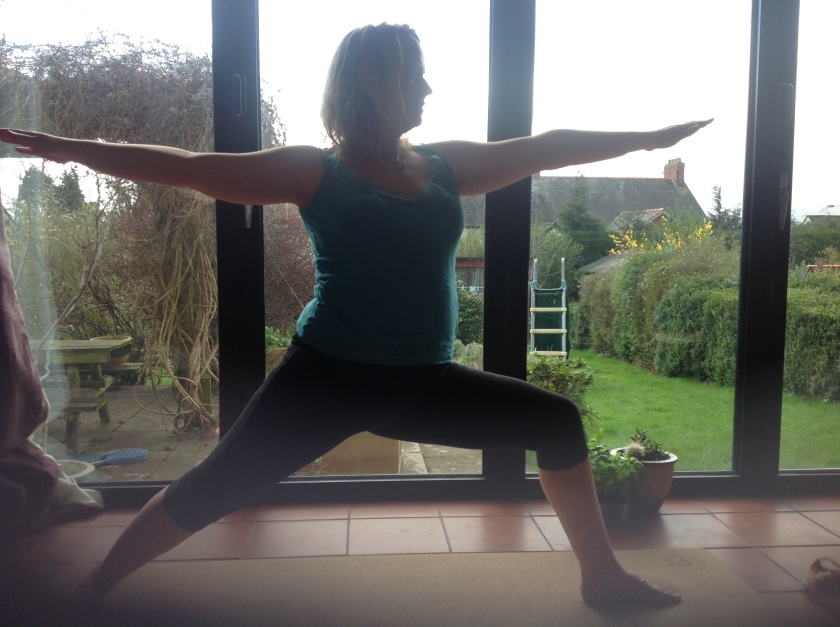
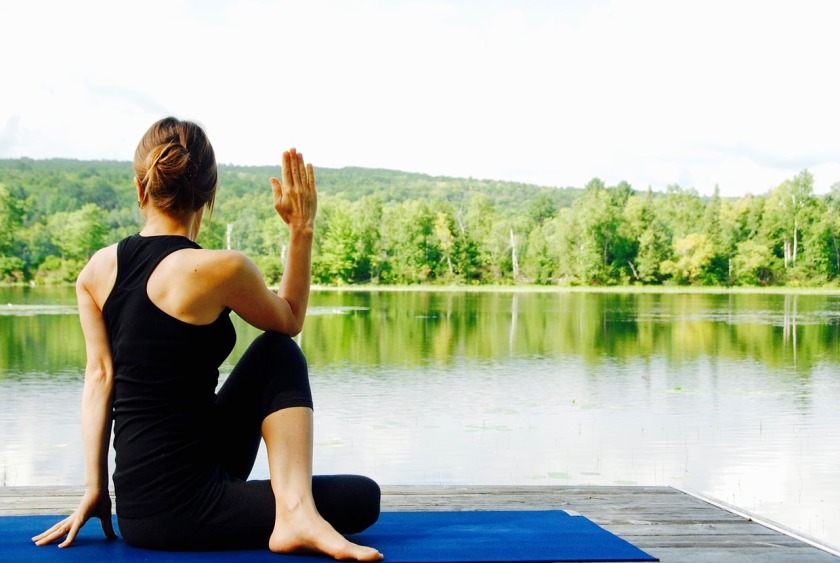
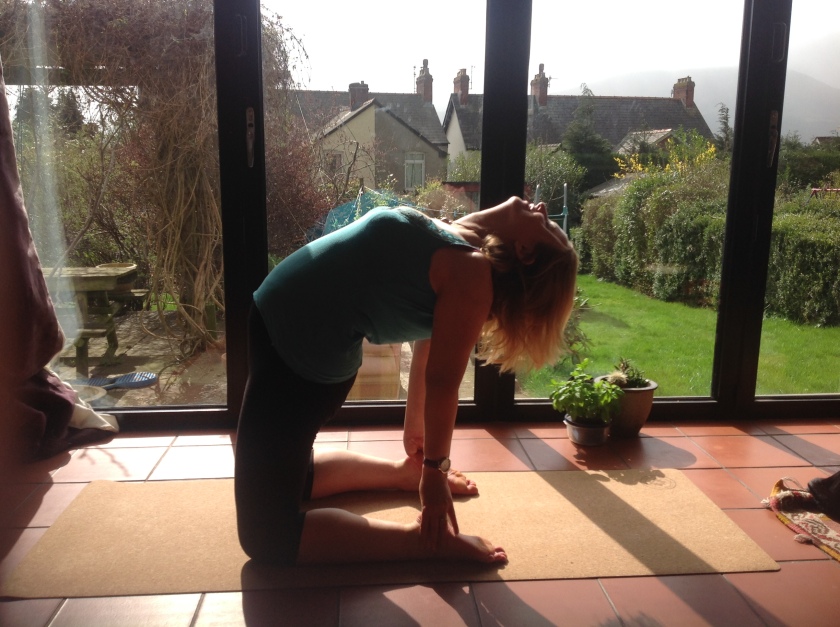
 My regular readers will know that I have recently started a Yoga Teacher Training course with
My regular readers will know that I have recently started a Yoga Teacher Training course with 


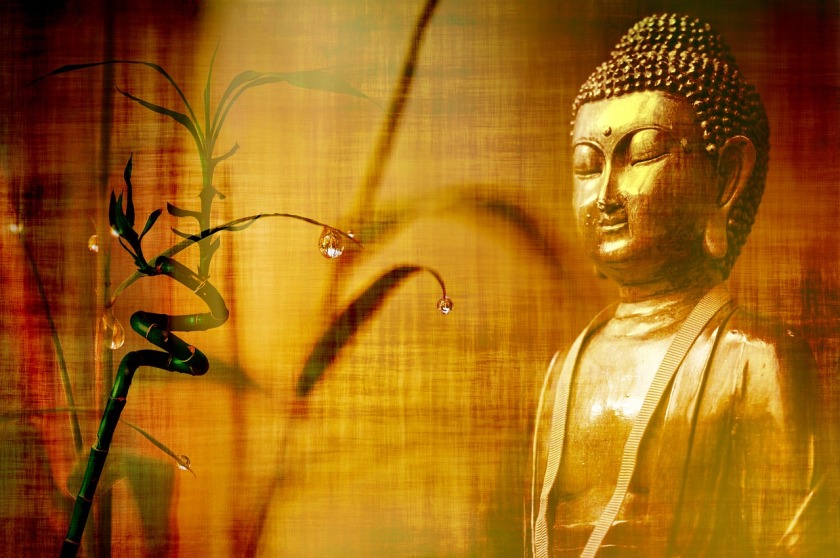
 Like Hermione Granger, if in doubt I go to the library. Many times in my life, I have been full of doubt or negativity, and the right book has come along at the right time to help me turn things around.
Like Hermione Granger, if in doubt I go to the library. Many times in my life, I have been full of doubt or negativity, and the right book has come along at the right time to help me turn things around.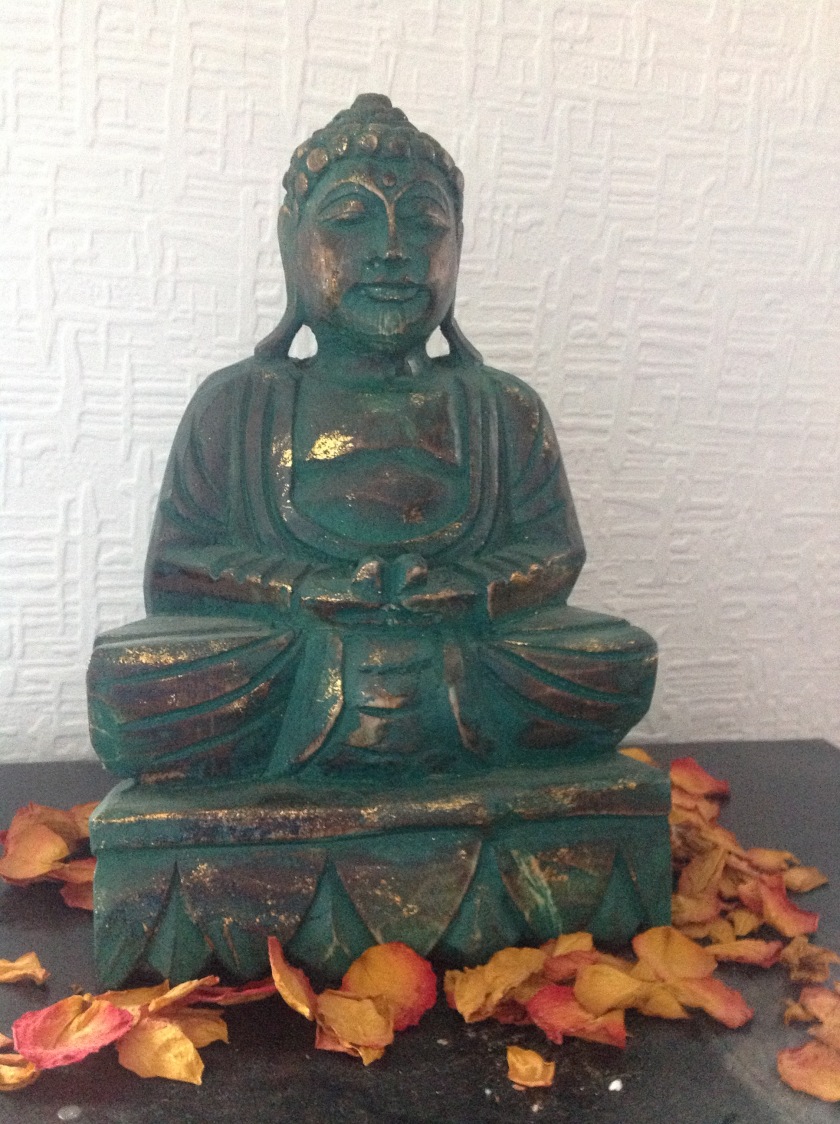 I talk a lot about meditation in my posts because it has transformed my life in numerous ways. I’m not particularly good at meditation – I often get bored or distracted – but that’s not the point. I do stick at it, and one thing I know for sure is that the more I meditate, the better my life gets. It’s not that bad things don’t happen, but I navigate them so much better.
I talk a lot about meditation in my posts because it has transformed my life in numerous ways. I’m not particularly good at meditation – I often get bored or distracted – but that’s not the point. I do stick at it, and one thing I know for sure is that the more I meditate, the better my life gets. It’s not that bad things don’t happen, but I navigate them so much better.
